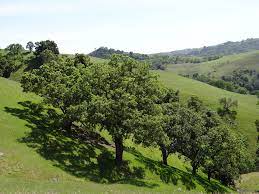Five years ago I posted a blog about the threat to oak trees from non-native insects and pathogens. I am prompted to update what I said then by the publication of a monumental new analysis of endangered oak species (Beckman et al. 2021; full citation at end of blog). This report is packed with maps and graphics displaying centers of endemism, geographic areas with highest threat levels, etc., and individual profiles of all species it deems at risk.
The new study, led by the Morton Arboretum, says there are more than 200 oak species in North America – including Mexico; but only 91 species native to the United States. Of these, 28 species qualify as “of conservation concern” – defined as facing a moderate or greater threat. The principal threats to oak species are small populations or ranges and conversion of habitats for human use. Overall, 10 (36%) of the oak species “of conservation concern” have some actual or potential exposure to established non-native pests.
The report states that two species are significantly threatened by a non-native pathogen: Shreve oak (Quercus parvula) by the sudden oak death pathogen Phytophthora ramorum and Ogelthorp oak (Q. ogelthorpensis) by the chestnut blight pathogen Cryphonectria parasitica.
Several other California oaks are under some level of attack by the polyphagous and Kuroshio shot hole borers. The goldspotted oak borer (GSOB) is mentioned only in the individual species’ profiles, and largely as a potential or undetermined threat. For example, Engelmann oak (Quercus engelmannii) is reported to have suffered some damage from GSOB but that mortality is “likely a result of a complex of factors (e.g., drought and root diseases).” The potential threat from both SOD and oak wilt is mentioned for several of the oaks that are in the red oak subgenus (Erythrobalanus).
The Morton Arboretum’s determination is based on the fact that the non-native insects and pathogens that I described five years ago are attacking primarily widespread species and have not – to date – caused sufficient damage to imperil those species. This situation contrasts sharply with certain Lauraceae (e.g., redbay) threatened by laurel wilt disease; five-needle pines killed by white pine blister rust; eastern or Canadian hemlock killed by hemlock woolly adelgid; and American beech, which now faces threats from beech bark disease, beech leaf disease, and possibly European beech leaf weevil.
Meanwhile, the non-native pests of oaks that I described five years ago continue to spread.
My Update Incorporating Morton Arboretum’s Analysis: Threats in the East
In the East (from the Atlantic Ocean to the Great Plains), oaks are under serious attack from two non-native pests; a third pest has been suppressed by biological control.
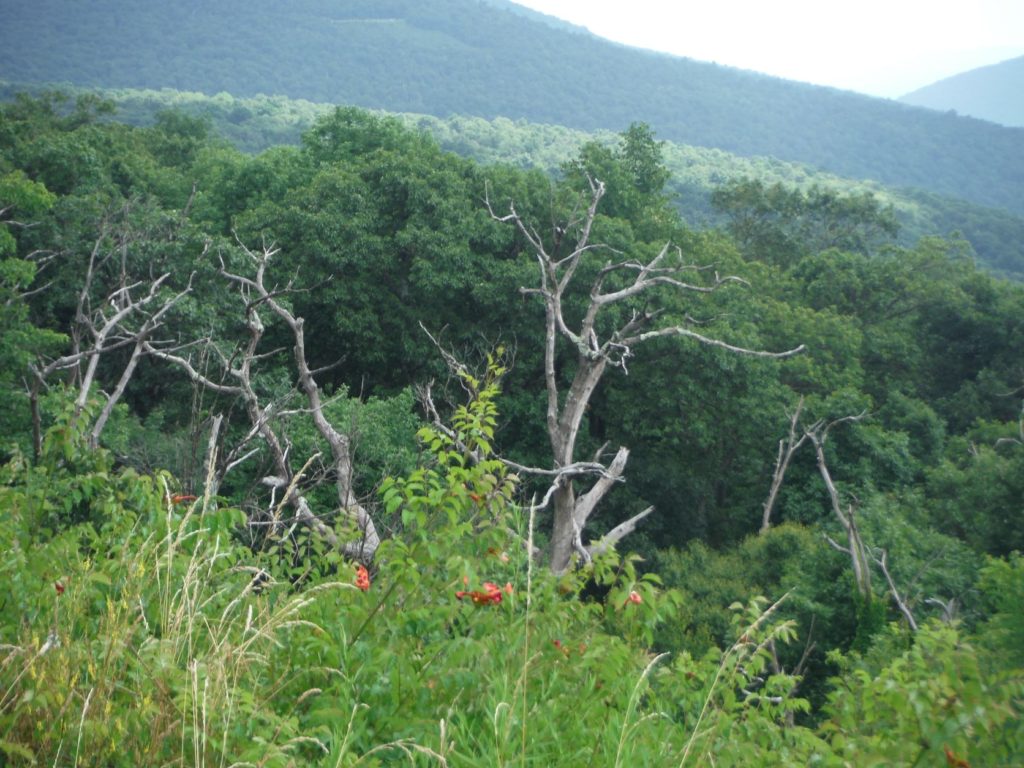
- The European
gypsymoth (Lymantria dispar). The APHIS quarantine map shows its spread to be largely contained. The moth is currently present throughout the Northeast as far west as Wisconsin and neighboring parts of Minnesota and Illinois; and as far south as Currituck and Dare counties in North Carolina. The Europeangypsymoth continues to be the target of major containment and suppression programs operated by USDA Animal and Plant Health Inspection Service (APHIS), the US Forest Service and the states. For years US Forest Service spent half of its entire budget for studying and managing non-native pests on the Europeangypsymoth. By FY2021, this allocation had been reduced to a quarter of the total budget. The Europeangypsymoth is the most widespread non-native pest (see map, linked to above) and attacks a wide range of tree and shrub species. Still, it rarely causes death of the trees. - Oak wilt (caused by the fungus Ceratocystis fagacearum) is widespread from central Pennsylvania to eastern Minnesota and across Iowa, down the Appalachians in West Virginia and North Carolina-Tennessee border, in northern Arkansas and with large areas affected in central Texas. There are several outbreaks in New York State. The most recent map I can find is from 2016 so it is difficult to assess more recent status. In that year, the US Forest Service called oak wilt one of the most serious tree diseases in the eastern U.S. It attacks primarily red oaks and live oaks. It is spread by both bark-boring beetles and root grafts.
In 2016 I also listed the winter moth (Operophtera brumata) as a threat. Now, its presence in coastal areas of New England and Nova Scotia (and British Columbia) has been reduced to almost nuisance levels by action of the biological control agent Cyzenis albicans. (See this report.)
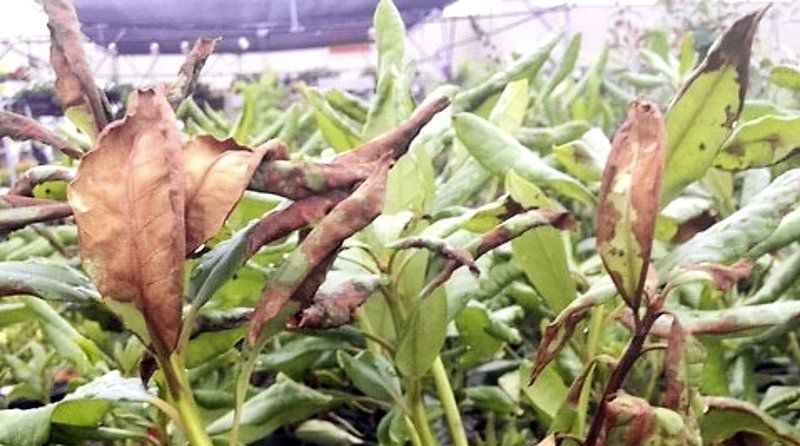
The most significant potential threat to eastern oaks identified to date is the sudden oak death (SOD) pathogen, Phytophthora ramorum. Several oak species have been shown in laboratory studies to be vulnerable to infection by this pathogen. Furthermore, the climate in extensive parts of the East is considered conducive to supporting the disease. SOD has not been established in the East. However, too frequently SOD-infected plants have been shipped to eastern nurseries, where some are sold to homeowners before regulatory officials learn about the situation and act to destroy the plants.
My Update Incorporating Morton Arboretum’s Analysis: Threats in the West
In the West, millions of oaks have been killed by several pathogens and insects that are established and spreading. Another has been introduced since my earlier blog (see Mediterranean oak beetle, below). Additional threats loom, especially Asian species of tussock moths.
- Coast live oaks, canyon live oaks, California black oaks, Shreve’s oaks, and tanoaks growing in coastal forests from Monterey County north to southern Oregon that catch fog/rain are being killed by sudden oak death (SOD). In this region, SOD has killed an estimated 50 million trees. While the preponderance of dead trees are not true oaks, but tanoaks (Notholithocarpus densiflorus), significant numbers of coast live oak (Quercus agrifolia), Shreve oak (Q. parvula var. shrevei), and California black oaks (Q. kelloggii) have also been killed. SOD continues to intensify in this region, and to expand. Sixteen California counties are now infected, and the infection in Curry County, Oregon has spread farther North. More worrying, two additional strains of the pathogen have been detected in forests of the region.
The Morton Arboretum analysis singled out Q. parvula as particularly threatened by SOD. Californians note that it is the subspecies Q. parvula var. shrevei that is threatened by SOD; the other subspecies, Q. parvula var. parvula (Santa Cruz Island oak) is – so far – outside the area infested by SOD.
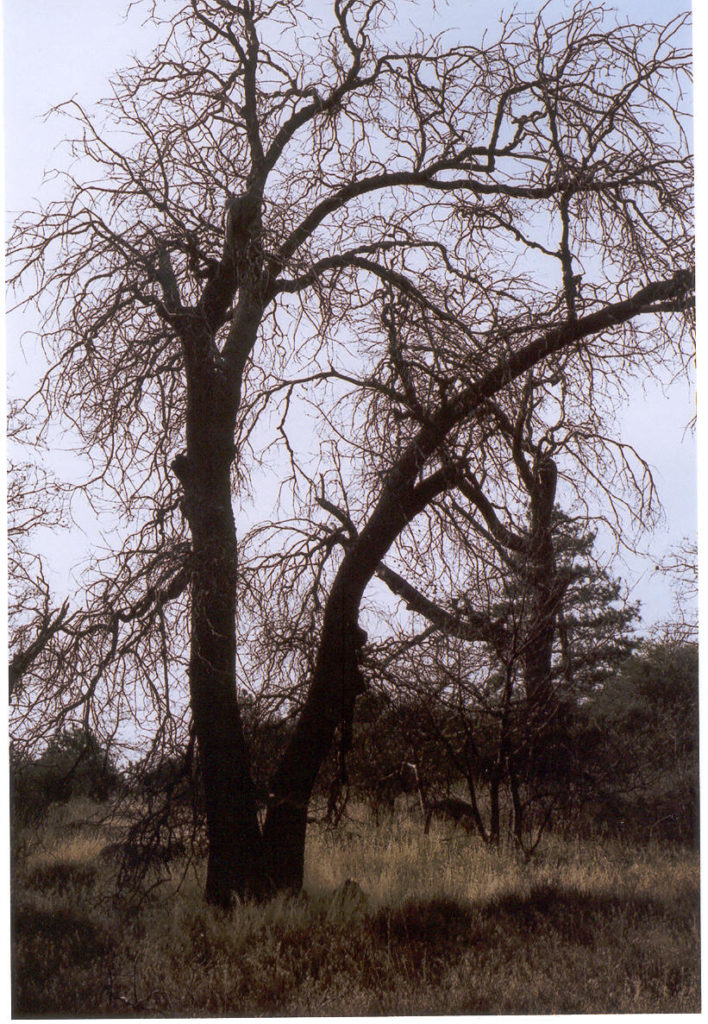
- Also in California, coast live oaks, black oaks, and canyon oaks in the southern part of the state are being killed by goldspotted oak borer. Confirmed infestations are now in San Diego, Orange, Riverside, San Bernardino, and Los Angeles counties. See the map here. At least 100,000 black oaks have been killed in less than 20 years. Neither the State of California nor USDA APHIS has adopted regulations aimed at preventing spread of the goldspotted oak borer.
The Morton Arboretum analysis considers California black oak (Q. kellogii) to be secure.
- Two more wood-boring beetles threaten oaks in southern California – the Polyphagous and Kuroshio shot hole borers. One or both of the invasive shot hole borers are known to be present in San Diego, Orange, Los Angeles, Riverside, San Bernardino, Ventura, and Santa Barbara counties. The beetles feed on coast live oaks, canyon live oaks, Engelmann oaks, and valley oaks – as well as many other kinds of trees. In the process, the beetles transmit a fungus that kills the tree. Many of the vulnerable tree species anchor the region’s riparian areas and urban plantings. See a map of the shot hole borers’ distribution here.
- In November 2019, scientists discovered a new ambrosia beetle in symptomatic valley oaks (Quercus lobata) trees in Calistoga, Napa County. The insect was determined to be a European species, Xyleborus monographus. The common name is Mediterranean oak borer, or MOB. Within a few months it was known that this beetle is fairly widespread in Napa and neighboring Lake counties. The beetle had never been intercepted at ports in California or found in traps designed to detect bark beetles deployed in the San Francisco Bay area but not including Napa or Sonoma. Like other beetles in the Scolytinae subfamily, MOB can transmit fungi. One of the fungal species detected in the Calistoga infestation is Raffaelea montetyi, which is reported to be pathogenic on at least one European oak species.
The California Department of Food and Agriculture proposed assigning a pest rank to the beetle in December 2020. In their draft document ranking risk, state officials note that a proven host — Q. lobata — is widespread in California and the insect is probably capable of establishing over much of the state. The possible economic impact was described as possibly affecting production of oaks in California nurseries and triggering quarantines.
Therefore, X. monographus could exacerbate the effects of SOD on California oaks.
The Morton Arboretum has singled out Q. lobata as at risk because of conversion of more than 90% of its habitat to agriculture.
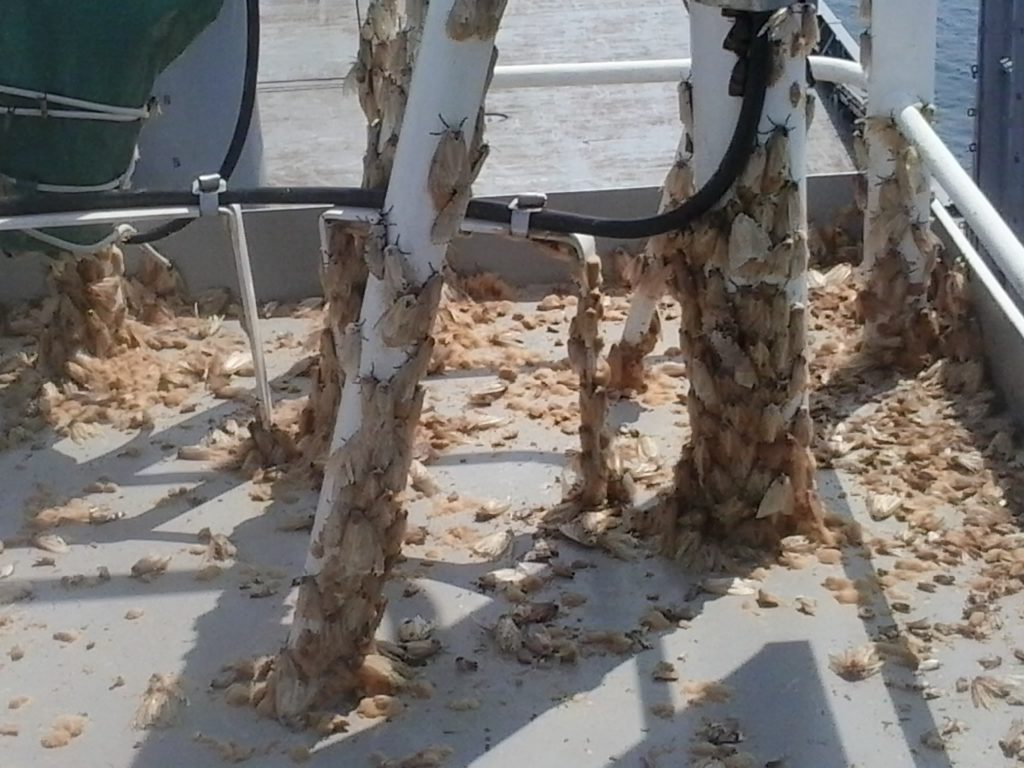
A looming potential threat to oaks on the West coast is the risk that tussock (gypsy) moths could be introduced to the area. The risk is two-fold – the Asian gypsy moth continually is carried to the area on ships bearing imports from Asia (as discussed in my blog in April). The European gypsy moth is sometimes taken across the country from its widespread introduced range in the East on travellers’ vehicles, outdoor furniture, or firewood. Both the West Coast states and USDA search vigilantly for any signs of gypsy moth arrival.
SOURCES
Beckman, E., Meyer, A., Denvir, A., Gill, D., Man, G., Pivorunas, D., Shaw, K., & Westwood, M. (2019). Conservation Gap Analysis of Native U.S. Oaks. Lisle, IL: The Morton Arboretum. https://mortonarb.org/app/uploads/2021/05/conservation-gap-analysis-of-native-US-oaks_sm.pdf
Posted by Faith Campbell
We welcome comments that supplement or correct factual information, suggest new approaches, or promote thoughtful consideration. We post comments that disagree with us — but not those we judge to be not civil or inflammatory.
For a detailed discussion of the policies and practices that have allowed these pests to enter and spread – and that do not promote effective restoration strategies – review the Fading Forests report at http://treeimprovement.utk.edu/FadingForests.htm
